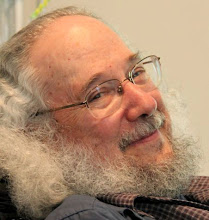On Intergenerational Inertia
Instruction seems to have an immense intergenerational inertia. Why else, in an age of ubiquitous calculators, do we insist on subjecting 5th graders to the torture of trying to learn to add multiple columns of numbers with perfect reliability or learn the mechanics of long division?
I conjecture that this is because our instruction goes back to a curriculum developed in 1900 when three-quarters of Americans worked on farms. (Elementary school education didn’t become compulsory throughout the US until 1918.) An appropriate job for a grade-school educated person was an account keeper or salesperson in a shop – where all calculations had to be carried out by hand.
As that motivation decays over decades, instead of changing our educational practice, we seem to continually re-invent ex-post-facto justifications for continuing to do what we know how to do. Today, we might justify it on the basis of “helping students to develop a number sense.” But there are much better ways to do this. [My favorite involved a program Judah Schwartz created called “What do you do with a broken calculator?” In this, students had to figure out how to carry out calculations when one of the keys on their computer-screen calculator failed to work.]
This inertia may be in part responsible for our tendency to create overly broad introductory physics courses. As teachers, we know all the things we learned a generation ago. They must be important, since we learned them and we did OK – and anyway they seem much easier to us after years of practice.* We also know that modern instruction requires us to update our teaching by including new topics. So we try to squeeze them in without removing the old. Of course the result is an increasingly superficial treatment – a course a mile wide and an inch deep.
When I first taught physics I was assigned to teach E&M to a class of physics majors. They had serious trouble learning the basic concepts of electricity and magnetism in a 15-week semester devoted entirely to the subject. Why should I imagine 40 years later that biology majors – students less well motivated and prepared in physics and math than self-selected physics majors, and with other equally difficult courses competing for their study time – should be able to master these ideas in 6 weeks?
Figuring out what students need to learn now – and what they need to do to learn it – is a much harder task than we typically assume, especially at the university level where teaching is a second tier activity that you are supposed to be able to do in your spare time when you’re not working on your research. This approach guarantees that we won’t have the time to be as thoughtful as the task needs, that we will have to fall back on what we learned when we were young a generation ago. This ill serves our students who will still be working a generation from now.
*Reverse Engineering the Solution of a "Simple" Physics Problem: Why learning physics is harder than it looks, E. F. Redish, R. E. Scherr, and J. Tuminaro, The Physics Teacher, 44, 293-300 (May, 2006).


0 Comments:
Post a Comment
<< Home